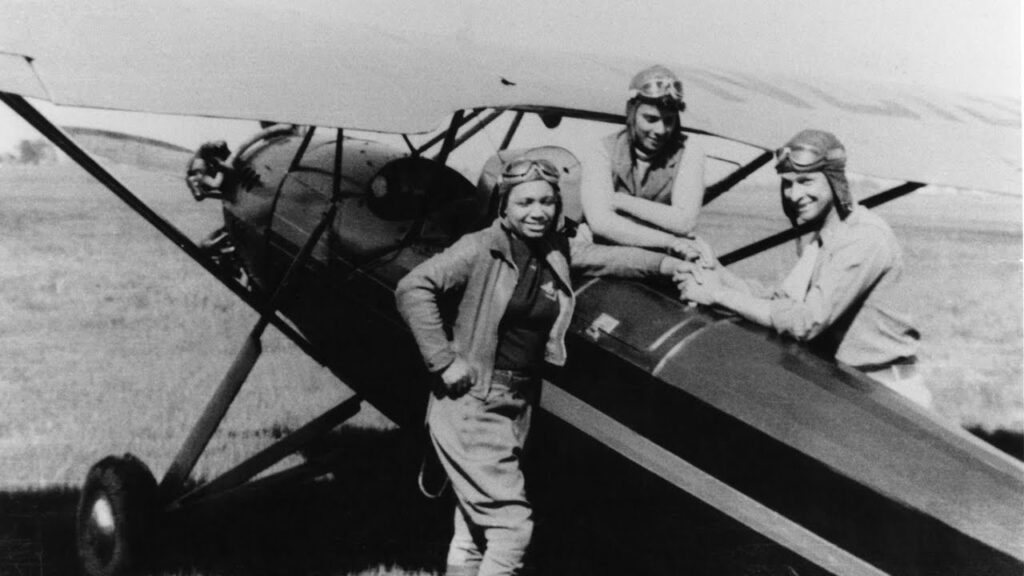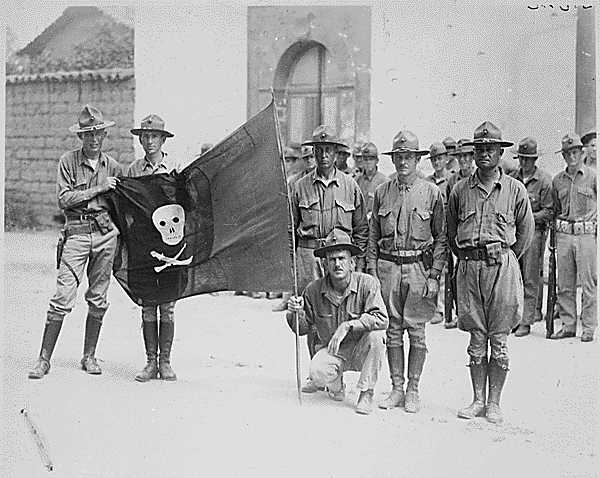The article by Matt Fratus was originally published by Coffee or Die.
When John Coleman returned from France after fighting with the US Army in World War I, he told his younger sister Bessie about the French female pilots. He’d tease her that in Europe French women had opportunities to learn to fly, opportunities the South Side of Chicago in 1919 didn’t offer to Black Americans. Of course, this sparked an immediate interest, despite the fact every flight school she applied for denied her because of her race.
Robert Abbott, an African American editor and publisher of the Chicago Weekly Defender, was fascinated with her never-quit attitude and offered advice. He recommended going to France, as her brother had once alluded to, to receive her training. The French were more accepting than segregated America. She taught herself the French language and applied to the most famous flight school in Europe. After she was accepted, she boarded the liner SS Imperator on Nov. 20, 1920, and sailed on an adventure to accomplish what had not seemed possible.
She enrolled in the Caudron Brothers’ School of Aviation in Le Crotoy and was the only non-white student in the class. Coleman was mentored under aviation pioneers Gaston and René Caudron. The French brothers trained more than 17,000 pilots in their careers and produced more than 10,000 aircraft. Their seven-month course taught Coleman how to fly in the Nieuport Type 82, a 27-foot-long biplane. The flying in the early 1920s was pretty sketchy — there was no steering wheel and the plane had no brakes. A large wooden stick controlled the plane’s pitch and roll, and Coleman learned to fly aerial maneuvers, performing barrel rolls, loops, tailspins, and other spectacular stunts.

Seven months of flying secured Coleman her international pilot’s license from the Fédération Aéronautique Internationale. She was long thought to be the first Black American civilian pilot in the world, until a family in Pennsylvania discovered the papers of Emory C. Malick, who earned a pilot’s license in March 1912 but then faded into obscurity.
Coleman arrived in New York City with not only bragging rights to prove her older brother wrong, but with the spunk and confidence to transform the aviation industry. Her gallant return was covered by The Associated Press, which called her “a full-fledged aviatrix, said to be the first of her race.” American reporters recalled European newspapers writing of her exploits, piloting the 220-horsepower Benz-motored LFG plane, the largest plane ever flown by a woman. And she did it without a lesson from an instructor for that aircraft.
This aviation trailblazer began barnstorming around the country in 1922. She amazed crowds with her finesse through the air and her daring stunts walking out onto her wings, at times even parachuting to the ground. Coleman pushed the envelope — an aviation term later made famous by Gen. Chuck Yeager — and continued to fly no matter the risk. Even after her plane’s engine failed midflight in February 1923 causing her to crash, she hopped back in the cockpit once her broken leg, cracked ribs, and facial abrasions healed.
“Tell them all that as soon as I can walk I’m going to fly!” Coleman wrote in a telegram to her fans, according to The New York Times.

In the days when aviation often featured white men, “Queen Bess” or “Brave Bessie” gained instant fame. She posed for the cameras wearing her long black coat and leather boots. She shared her “aero mania” with all who would listen. Coleman envisioned opening her own flight school one day to give opportunities that she was not granted.
Her friend Josephine Baker, a symbol of the Jazz Age, later followed in her footsteps to earn her pilot wings in 1933. Tragically, however, Coleman did not witness Baker achieve this accomplishment because on the morning of April 30, 1926, she was killed in an accident alongside her mechanic and publicity agent William Wills. He was piloting Coleman’s Curtiss JN-4 (Jenny) over an airfield in Jacksonville, Florida. They were completing a test flight in preparation for the next day’s air show when their plane went into a nosedive at 3,000 feet. While Wills struggled with the controls, the aircraft flipped upside down. Since there were no seatbelts, Coleman fell out of the cockpit to her death.
The investigation uncovered evidence a loose wrench had jammed the plane’s controls. Coleman was only 34 years old at the time of her death. Lt. William J. Powell established the Bessie Coleman Aero Club in 1929 in her honor to promote aviation in the Black community. Two years later, the flying club sponsored the first all-Black air show in America that entertained a crowd of 15,000 spectators. And annually each year on the anniversary of her death, Black pilots buzz over Coleman’s grave and drop flowers from their cockpits. This tradition began in 1931 and is a fitting tribute to one of the first Black American pilots in the world, who has since inspired generations of aviation enthusiasts to take flight.




